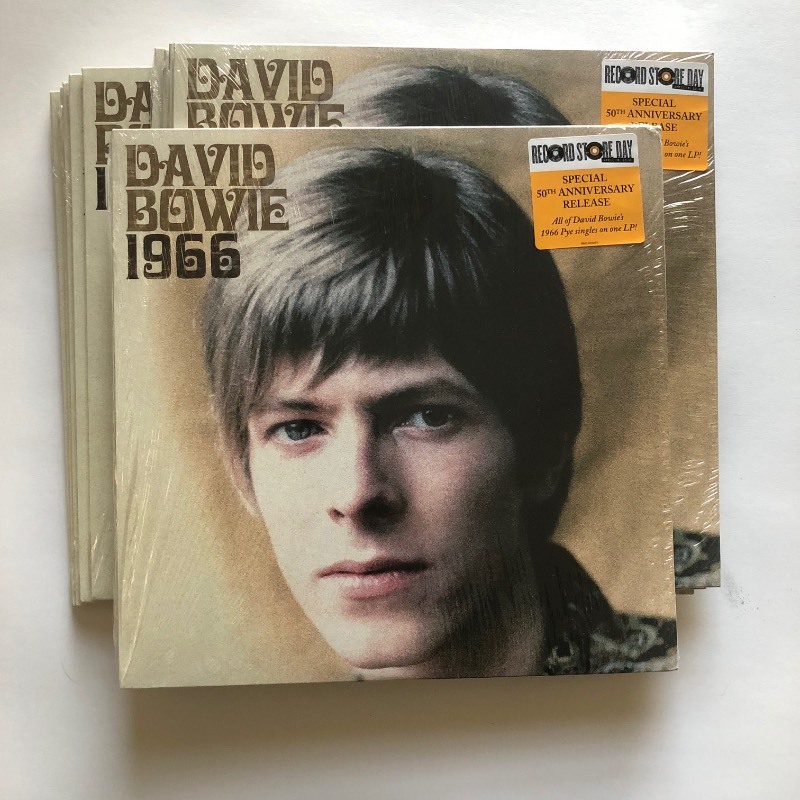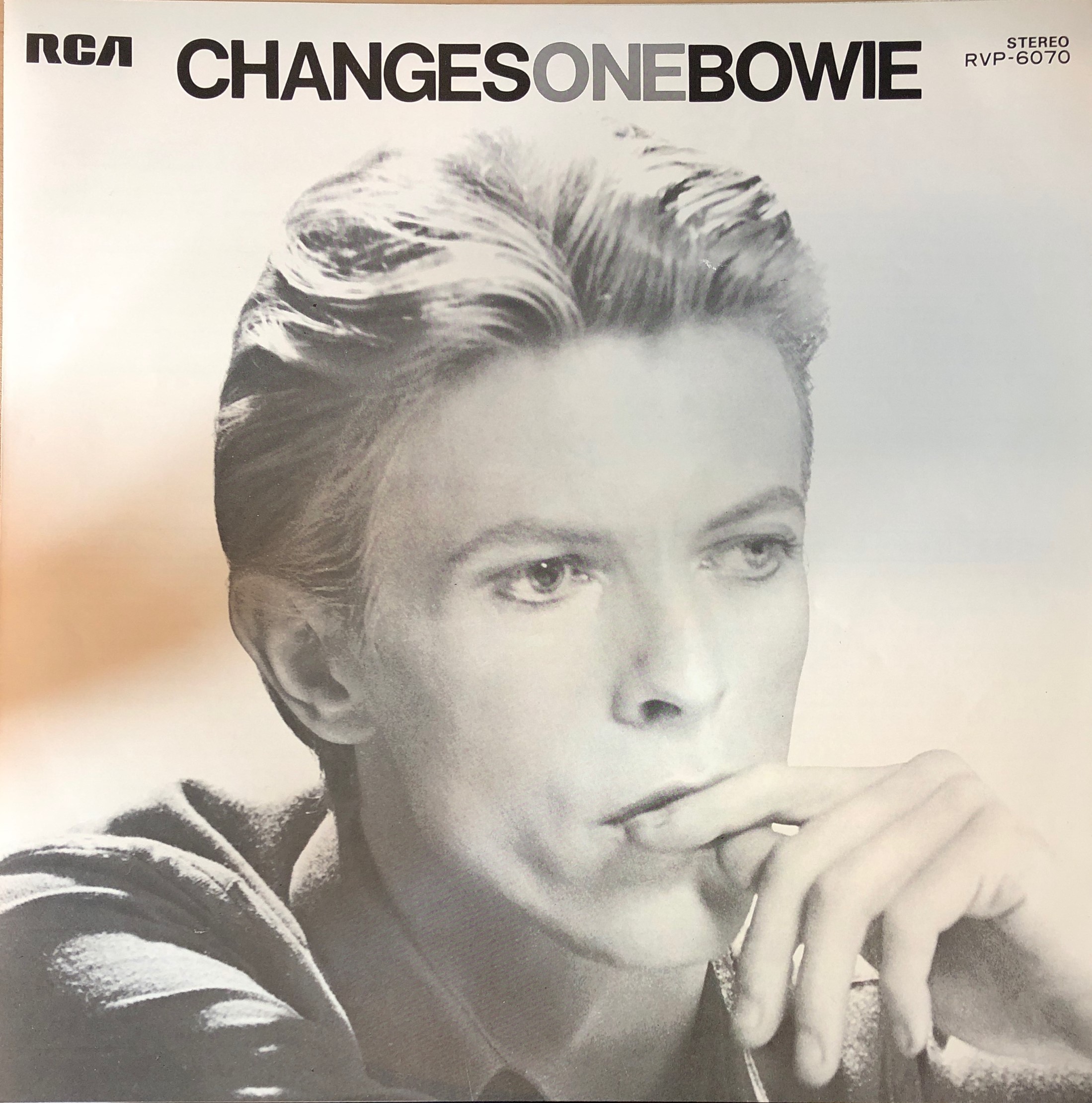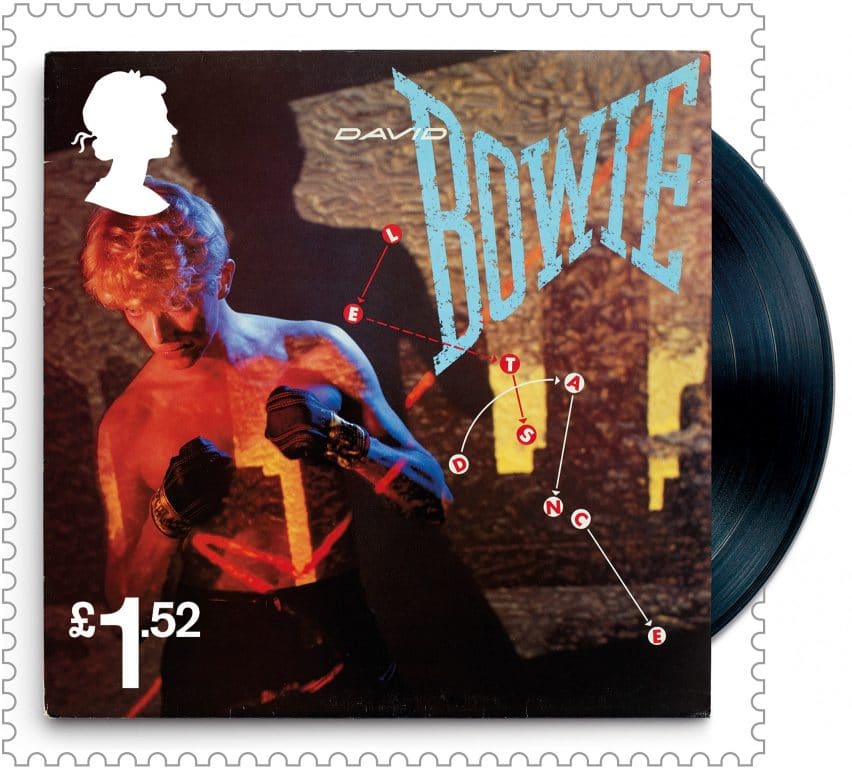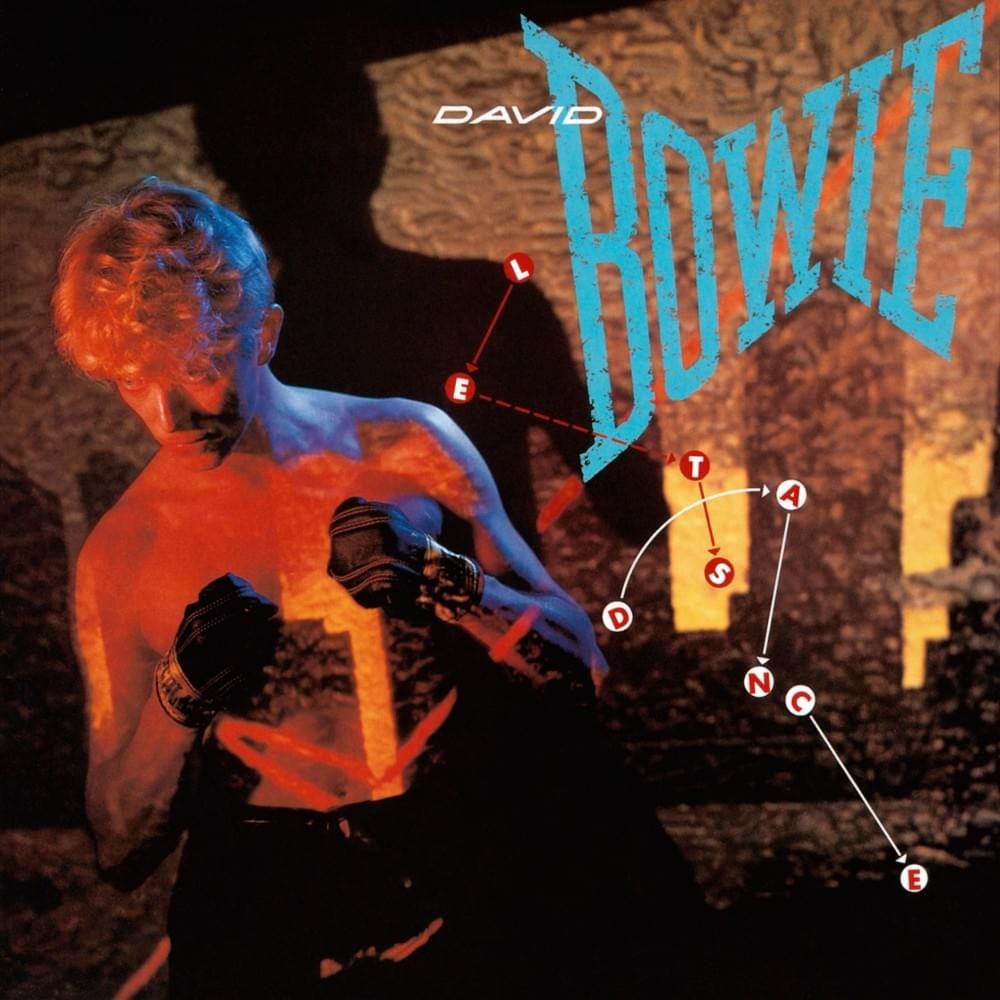David Robert Jones(8 January 1947 – 10 January 2016), known professionally as David Bowie (/ˈboʊi/ BOH-ee), was an English singer-songwriter and actor. He was a leading figure in the music industry and is considered one of the most influential musicians of the 20th century. He was acclaimed by critics and musicians, particularly for his innovative work during the 1970s. His career was marked by reinvention and visual presentation, with his music and stagecraft having a significant impact on popular music.
During his lifetime, his record sales, estimated at over 100 million records worldwide, made him one of the world's best-selling music artists. In the UK, he was awarded ten platinum album certifications, eleven gold, and eight silver, and released eleven number-one albums. Rolling Stone placed him among its list of the 100 Greatest Artists of All Time and following his death in 2016, Bowie was dubbed "The Greatest Rock Star Ever" by the magazine. After uneven commercial success in the late 1970s, Bowie had UK number ones with the 1980 single "Ashes to Ashes", its parent album Scary Monsters , and "Under Pressure", a 1981 collaboration with Queen. He reached his commercial peak in 1983 with Let's Dance; the album's title track topped both UK and US charts.
Throughout the 1990s and 2000s, Bowie continued to experiment with musical styles, including industrial and jungle. He also continued acting; his roles included Major Jack Celliers in Merry Christmas, Mr. Lawrence , Jareth the Goblin King in Labyrinth , Pontius Pilate in The Last Temptation of Christ , and Nikola Tesla in The Prestige , among other film and television appearances and cameos. He stopped touring after 2004 and his last live performance was at a charity event in 2006.
In 2013, Bowie returned from a decade-long recording hiatus with The Next Day. He remained musically active until he died of liver cancer at his home in New York City, two days after his 69th birthday, and the release of his final album, Blackstar . Riding the wave of hysteria created by Ziggy Stardust and the previous tour,Aladdin Sane came out of the box a winner. But its immediate success would not have sustained had the album not been good. Luckily, it's stellar, with incredible songs powered byMick Ronson'smeaty and muscular guitar sound. Paired with the most iconic of album covers, this album was a sure hit.
The title song ("A lad insane") was inspired by Bowie's half-brother, who'd been diagnosed as a schizophrenic, but also depicts kids on the eve of wartime. It's a solid, stately song that is distinguished primarily by a most extraordinary piano solo by the brilliantMike Garson, in which he bangs out a loud solo with no regard to tempo, rhythm, key, etc. Everything here, right down to the cover of the Stones'"Let's Spend the Night Together", is perfect. The final studio album by Simon & Garfunkel topped the charts in over ten countries and received two Grammy Awards. The title song became one of the most performed songs of the twentieth century, with over 50 artists, among them Elvis Presley and Aretha Franklin, covering the song.
Despite the albums success, the duo went their separate ways shortly after the albums release with their last performance at that time in the Forest Hills Stadium on July 18, 1970. In an advance release, on November 19, 2015, Bowie put out the album's extraordinary title track as a single and a music video and when I first heard the song, "Blackstar," I was stunned, thrilled, and immediately hooked. My own obsession with Bowie began with the Space Oddity record and ended abruptly with Scary Monsters . I didn't own any of his other albums, except for Outside, which a friend had recommended and given to me on CD .
I knew Bowie as the punk of "Queen Bitch" and "Hang Onto Yourself," as the art-rock godhead of Low and Scary Monsters, as the dark conceptualist that dreamed of Diamond Dogs and created the weird, compelling world of Station to Station. Most of all, I knew him as an artist, certainly the boldest and most prominent pure artist in rock and roll. We close out our Tin Machine songs list with the band's incredible piece of music entitled "Under The God." After the release of the promotional single "Heavens in Here," the song "Under The God," was released as the first single from the album Tin Machine . "Under the God," would become the band's biggest hit in the United States.
It was a top 10 hit on both the US Billboard Mainstream Rock tracks and US Billboard Alternative Rock Tracks Charts. As big as David Bowie's always been in England he's been just as big in the United States. We miss David Bowie and we will continue to write about his music and his life as long as we own this rock and roll site. We hope you enjoyed this Tin Machine songs list and it inspires you to buy both of these amazing albums.
Heathen was released in June 2002, preceded by first single Slow Burn featuring old friend Pete Townshend on lead guitar. Dave Grohl took the same role on the Neil Young cover I've Been Waiting For You. Guest turns aside though, Bowie played more instruments on Heathen than anything in memory, including the drums over his own loop on the Pixies cover Cactus, as well as nearly all the synth work and some of the piano. As for the album title, "Heathenism is a state of mind", Bowie explained at the time. David performed Low in its entirety alongside Heathen as part of the festival. But his legendary shirtless stage performances are but one view of the entire package.
Iggy has been behind some of the greatest rock and roll records ever made. Following three stone cold classics with the Stooges, he jumped into his solo career with more bravado, insight and intellect than most would have thought him capable at the time. And even though mainstream commercial success has eluded him throughout his career, there were a few times when he managed to align with the times and dent the charts. Lennon called Bowie's work "great, but it's just rock'n'roll with lipstick on". Earning the distinction of being one of the first white artists to appear on the US variety show Soul Train, Bowie mimed "Fame", as well as "Golden Years", his November single, which was originally offered to Elvis Presley, who declined it. Young Americans was a commercial success in both the US and the UK, and a re-issue of the 1969 single "Space Oddity" became Bowie's first number-one hit in the UK a few months after "Fame" achieved the same in the US.
Despite his by now well established superstardom, Bowie, in the words of Sandford, "for all his record sales , existed essentially on loose change." In 1975, in a move echoing Ken Pitt's acrimonious dismissal five years earlier, Bowie fired his manager. Bowie's side band was sort of a reaction to and rebellion against Bowie feeling trapped by the 80s hit-making machine and the drive for commercial success. It is distinguished by noisy guitars, loud trashcan drums, and driving rhythms. The second album uses that same approach, but with somewhat more melodic and accessible songs. The combination of catchy songs with aggressive guitar work creates a very compelling package, with standouts like"Baby Universe", "One Shot", "You Belong in Rock 'n' Roll", "If There is Something", "Shopping for Girls","Goodbye Mr. Ed" and the instrumental finale"Hammerhead".
I hate to say it, but the only two missteps that the album takes are the two songs written and sung by drummer Hunt Sales. A third TM release – a live album – was still to come, but none of the albums sold very well, and received incredibly mixed reviews. But guitaristReeves Gabrels would remain in Bowie's band for the next batch of albums. Following a pretty serious health scare in 2003, Bowie laid low for a long time, and his fans came to accept that they'd probably heard the last of him. But then, on his 66th birthday on 8 January 2013, Bowie shocked the world with the release of a new single and the news that he'd been secretly recording a new album that would be released two months later. And that album turned out to be a pretty straightforward rock album that reclaimed Bowie's past glory with some very strong songwriting and performances.
This album is more confident, more comfortable than anyone expected it would be. Jackson's previous album Off the Wall had been a critical success, but he wasn't happy. He was disappointed that it didn't win a Grammy for Record of the Year and felt generally undervalued by the music industry. With 33m units sold in the US since 1982, Jackson's sixth studio album won a record-breaking eight Grammy Awards in 1984, including Album of the Year. The album produced seven singles — "The Girl Is Mine", "Billie Jean", "Beat It", "Wanna Be Startin' Somethin'", "Human Nature", "P.Y.T. ", and "Thriller" — all of which reached the top 10 on the US Billboard Hot 100 chart.
The transatlantic pop rock band Fleetwood Mac's 11th studio album won the Grammy Award for Album of the Year in 1978, Rumours has since sold over 40 million copies worldwide, assisted by the hit songs "Go Your Own Way", "Dreams", "Don't Stop", and "You Make Loving Fun". The album spent 31 non-consecutive weeks at number-one on the US charts. As of May 2016, Rumours has spent 630 weeks in the UK Top 75 album chart and is the 11th best-selling album in UK history. Together, they recorded one of the most controversial albums of Bowie's career, not only because of it's relative "rawness" and very hard rock content but also because Bowie wanted this released not as a solo project, but as a collective band effort.
Bowie also insisted it be a democratic band, in that he was simply just one member of the gang, so the band photo on the cover had Bowie as the most distant member (and what the hell, was that facial hair on Bowie !!). Bowie wasn't mentioned anywhere on the album cover, this was a Tin Machine album. Seemingly overnight, Bowie's sound changes from music hall, folk and lightweight hippy fare to a harder-edged guitar driven rock sound. This is immediately evident on the 10-minute opening track,"Width of a Circle". This must have come as something of a shock to anyone who'd been following his early career.
This is the first major reinvention of his sound, and a sign of what's to come, both his transformation to rock god and his constant reinvention. If you listen to Bowie's albums in order, this is the first time that you start to hear the Bowie that everyone thinks of when they think of "Bowie" ("Space Oddity" on the second album not withstanding). Aside from the excellent opening song, highlights include"All the Madmen", "Black Country Rock", "Savior Machine",and of course the one every knows, the title song. At the halfway point on our Tin Machine songs list we turn to one of the band's most popular songs entitled "Heaven's In Here." The song was released as the band's debut single from the group's first album Tin Machine.
This is the most classic rock sounding song from the band which is pretty interesting that they decided to release it as the lead single. The guitar work by Reeves Gabrels on this one is off the charts fantastic. Over time the eleventh and final album studio album by The Beatles became viewed as among the Beatles' best and many critics have ranked it as one of the greatest albums of all time. The cover image of the Beatles on the Abbey Road crossing has become one of the most famous and imitated in recording history and is a popular destination for Beatles fans. The seventh studio album by American rock singer-songwriter Bruce Springsteen produced seven top-10 hit singles and was promoted with a worldwide concert tour by Springsteen.
Finally Springsteen became as powerful in the studio as he always had been on stage. In 1989, Bowie created the rock group Tin Machine, who released a self-titled album with EMI. Although Tin Machine reached number three on the UK Albums Chart, it did not sell well and Bowie and EMI did not renew their contract. Tin Machine II followed in 1991 on London Records and, only reaching number 23 in the UK, was Bowie's worst-charting album since the 1973 re-release of The Man Who Sold the World. Continuing as a solo artist, Bowie's next album, Black Tie White Noise , reached the number one position on the UK Albums Chart.
Bowie released a further seven studio albums, all of which have reached the top ten in the UK. Released after a ten-year hiatus, The Next Day was Bowie's first UK chart-topping album since Black Tie White Noise . Bowie released his final album, Blackstar on 8 January 2016, his 69th birthday and two days before his death on 10 January. The album debuted at number one in the UK and became Bowie's first album to reach number one on the Billboard 200 in the US and went gold.
We now know that Bowie had been dying of liver cancer, having been diagnosed 18 months earlier, just a few months after the release of The Next Day. David never went public with his condition, instead he planned the Blackstar album as his swan song and parting gift, leaving us all as we knew him best, as a true artist. The album itself is a masterpiece of both iconoclasm and iconography; Tony Visconti tells us that they intentionally avoided a rock and roll sound, working exclusively with jazz musicians and listening to Kendrick Lamar's To Pimp a Butterfly album during the sessions for inspiration.
We now know that Bowie was aware that he was dying and putting his every last effort into his last work on Earth. That his final album is so full of life, artistry, intention, and ultimately, meaning is a grand statement about Bowie the man and a beautiful testament to Bowie the artist. "Prisoner Of Love" is my favourite track here and is really is a fantastic song. It's the closest to a love song on the album, although there is a dark undertone to the song which still gives it that Tin Machine edge. That said, it really is quite beautiful, with the music restrained and Bowie's vocal performance nothing short of brilliant.
The chorus with excellent backing vocals is the most "grandiose" Bowie has sounded for quite some time. This was released as the third single off the album and would have been a huge hit if it had been a Bowie "solo" effort . The title track "Tin Machine" comes next and is one of my favourite tracks on the album.
It has so much going on with a frantic sound and tempo where you can just imagine the band with their heads down just going for it. I have no idea what the song is about, so it has that classic Bowie ambiguity that is so endearing ("Working horrors humping Tories, Spittle on their chin"). It does though touch on the subject of "Goons" and has an anti far right-wing political sentiment that runs throughout the album. The band must have been somewhat attracted by the song as they named themselves after it.
This was also the second single from the album, backed with a somewhat mediocre live version of Bob Dylan's "Maggie's Farm". If you're familiar with his far-better-known later work, you might find this first album a shock. And you'd be hard-pressed to recognize the artist who recorded his far-better-known later work in this. It has elements of folk rock, of music hall, of vaudeville, and all sorts of other things. Hearing "Fame"on the radio as a young 12-year-old kid was my introduction to Bowie. It struck me as different from everything else happening on the radio at the time (all of which was quite new to me so I didn't really have a way of evaluating what I was hearing).
Other than the title song and the big hit single, I've never been able to connect to this album. Which is odd, because not only do I love Bowie, I also love a lot of soul music. And it's certainly not a bad album at all."Young Americans" is a virtual snapshot of America on the world stage in the mid-seventies. The remake of"John I'm Only Dancing"is quite fun, with its funky rhythm guitar that puts it squarely alongside so many of the radio hits of its time. I rank it ahead ofTonightbecause it's a solid, cohesive album, but the two could easily swap places as this is actually the album I listen to the least. It's a very good album, well-written, well-produced, great performances .
Continuing with our top 10 Tin Machine songs list we turn to the band's debut album for the first time and present the great song Baby Can Dance. Imagne if a band like this existed in 2021 and was putting out such great music as this songs. Our David Bowie Tin Machine songs list looks at a band that was very much short-lived formed by David Bowie in 1988. Desiring to be just a part of a band instead of just the solo superstar legendary rock star that he was, David Bowie formed a band with Reed Gabriels on guitar, Tony Fox Sales on bass and Hunt Sales on drums. Of course, David Bowie fans really didn't care about the other musicians and the group. All the fans wanted was new David Bowie music and if it was going to be released as a group called Tin Machine than so be it.
By 1991, Bad was the second-best-selling album of all time at the time, behind Thriller, having sold 25 million copies worldwide. The eleventh studio album by Pink Floyd was a rock opera; its story explores Pink, a jaded rock star whose eventual self-imposed isolation from society is symbolised by a wall. The record was a commercial success, charting at number-one in the US for 15 weeks. The Wall initially received mixed reviews from critics, many of who found it overblown and pretentious.
It later came to be considered one of the greatest albums of all time, as well as being one of the most well-known concept albums. It reached number-one in eleven countries, including the US for 12 non-consecutive weeks. Sales were boosted when the single "Smooth" featuring Matchbox Twenty singer Rob Thomas, was a number one success worldwide and topped the Billboard chart for 12 weeks. 1999 also saw David join Placebo at the annual BRIT Awards for a performance of the T Rex classic Twentieth Century Boy—a performance that went down so well that the UK's Mirror newspaper staged a campaign for the track to be released as a single. That July saw David voted both biggest music star of the 20th century by readers of The Sun newspaper and sixth Greatest Star of The Century by Q Magazine's readers (the Q poll also saw David place as third highest-ranking living star). His collaboration with Anthony Kiedis, Flea, Chad Smith, and whoever happened to be playing guitar at the time is the longest and most commercially fruitful relationship of his career.
I'm With You represented the end of that relationship, at least for now. Though this album nabbed a Grammy nomination, Rubin and the band went separate ways after its release, with the Peppers electing to work with Danger Mouse on the The Getaway five years later. Though I'm With You doesn't reach the highs Rubin and the Peppers were accustomed to, "Brendan's Death Song" is an underrated gem. "The Heart's Filthy Lesson"Bowie the artist must have been getting restless because his next project, Outside, a reunion with Brian Eno was a total experiment in music composition and record-making. Ever since their meeting at David's wedding to Iman, Bowie and Eno had been trading tracks and long written manifestos on what they each thought was missing in music, turning their collective focus to the avant-garde periphery instead of the commercial mainstream. Next, Bowie and Eno constructed a 3-hour collage piece that was mostly spoken word from their observations, which eventually provided the basis of the Outside concept.
Notably, Bowie and the love of his life, Iman were married in 1992. The album is bookended by two wedding songs, the instrumental opener "The Wedding" being one of the most enduring tracks (led by Bowie's own strange, fractured melodic sax), it's an album that is both unmistakably buoyant and a little labored. As Rob Sheffield asserts in his post-death meditation, "On Bowie," David never made a lazy record again once he was with Iman because the relationship gave his writing a sense of purpose.


























No comments:
Post a Comment
Note: Only a member of this blog may post a comment.